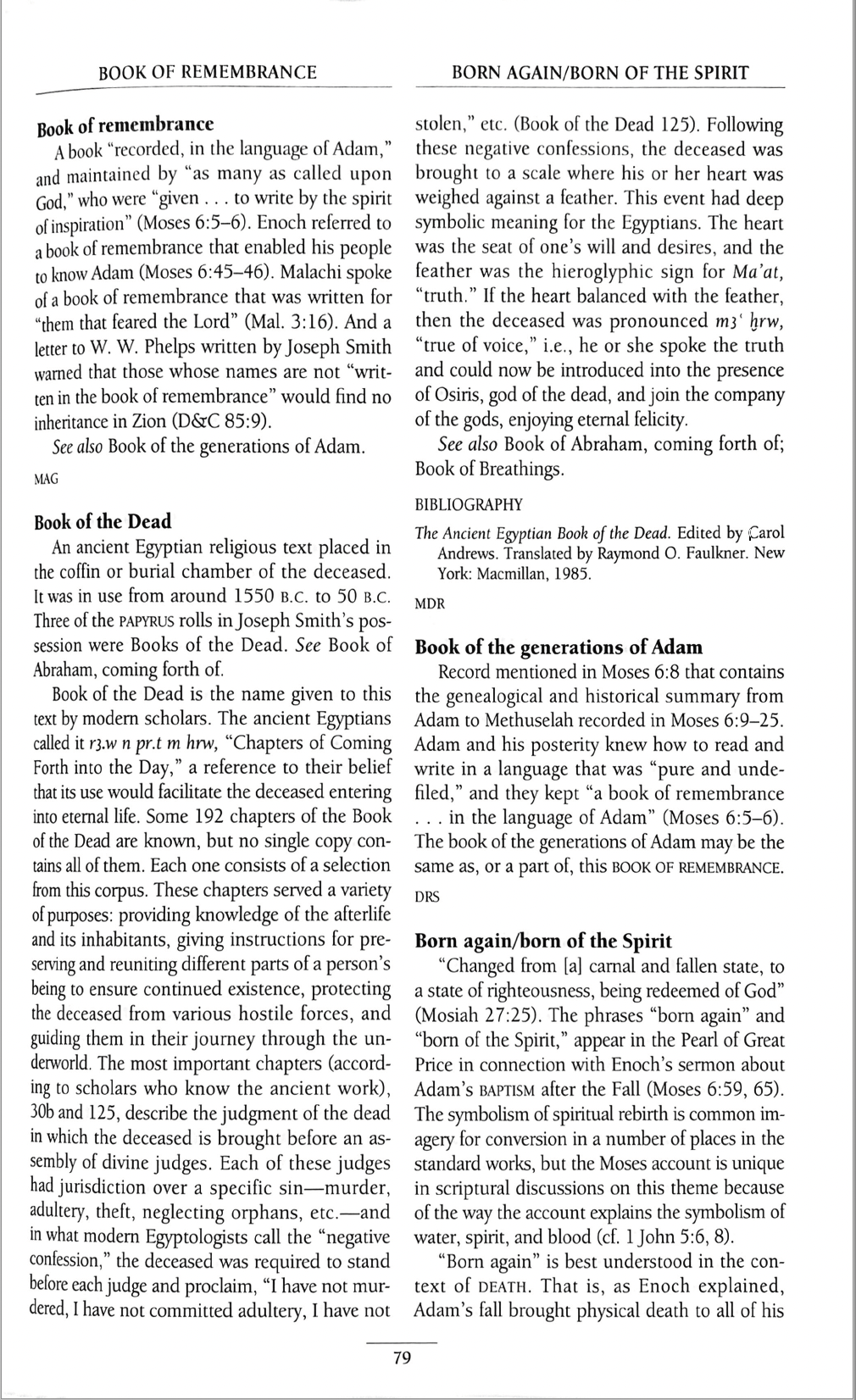Michael D. Rhodes gives overview of Book of the Dead for LDS readers.
- Type
- Academic / Technical Report
- Source
- Michael D. Rhodes LDS
- Hearsay
- DirectSecondary
- Reference
Michael D. Rhodes, "Book of the Dead," in Dennis L. Largey, ed. Pearl of Great Price Reference Companion, (Salt Lake City: Deseret Book, 2017), 79
- Scribe/Publisher
- Deseret Book
- People
- Michael D. Rhodes
- Audience
- Latter-day Saints, Reading Public
- Transcription
An ancient Egyptian religious text placed in the coffin or burial chamber of the deceased. It was in use from around 1550 B.C. to 50 B.C. Three of the papyrus rolls in Joseph Smith's possession were Books of the Dead. See Book of Abraham, coming forth of.
Book of the Dead is the name given to this text by modern scholars. The ancient Egyptians called it r3.w n pr.t m hrw, "Chapters of Coming Forth into the Day," a reference to their belief that its use would facilitate the deceased entering into eternal life. Some 192 chapters of the Book of the Dead are known, but no single copy contains all of them. Each one consists of a selection from this corpus. These chapters served a variety of purposes: providing knowledge of the afterlife and its inhabitants, giving instructions for preserving and reuniting different parts of a person's being to ensure continued existence, protecting the deceased from various hostile forces, and guiding them in their journey through the underworld. The most important chapters (according to scholars who know the ancient work), 30b and 125, describe the judgment of the dead in which the deceased is brought before an assembly of divine judges. Each of these judges had jurisdiction over a specific sin—murder, adultery, theft, neglecting orphans, etc.—and in what modern Egyptologists call the "negative confession," the deceased was required to stand before each judge and proclaim, "I have not murdered, I have not committed adultery, I have not stolen," etc. (Book of the Dead 125). Following these negative confessions, the deceased was brought to a scale where his or her heart was weighed against a feather. This event had deep symbolic meaning for the Egyptians. The heart was the seat of one's will and desires, and the feather was the hieroglyphic sign for Ma'at, "truth." If the heart balanced with the feather, then the deceased was pronounced m3 hrw, "true of voice," i.e., he or she spoke the truth and could now be introduced into the presence of Osiris, god of the dead, and join the company of the gods, enjoying eternal felicity.
- Citations in Mormonr Qnas
The B. H. Roberts Foundation is not owned by, operated by, or affiliated with the Church of Jesus Christ of Latter-day Saints.

